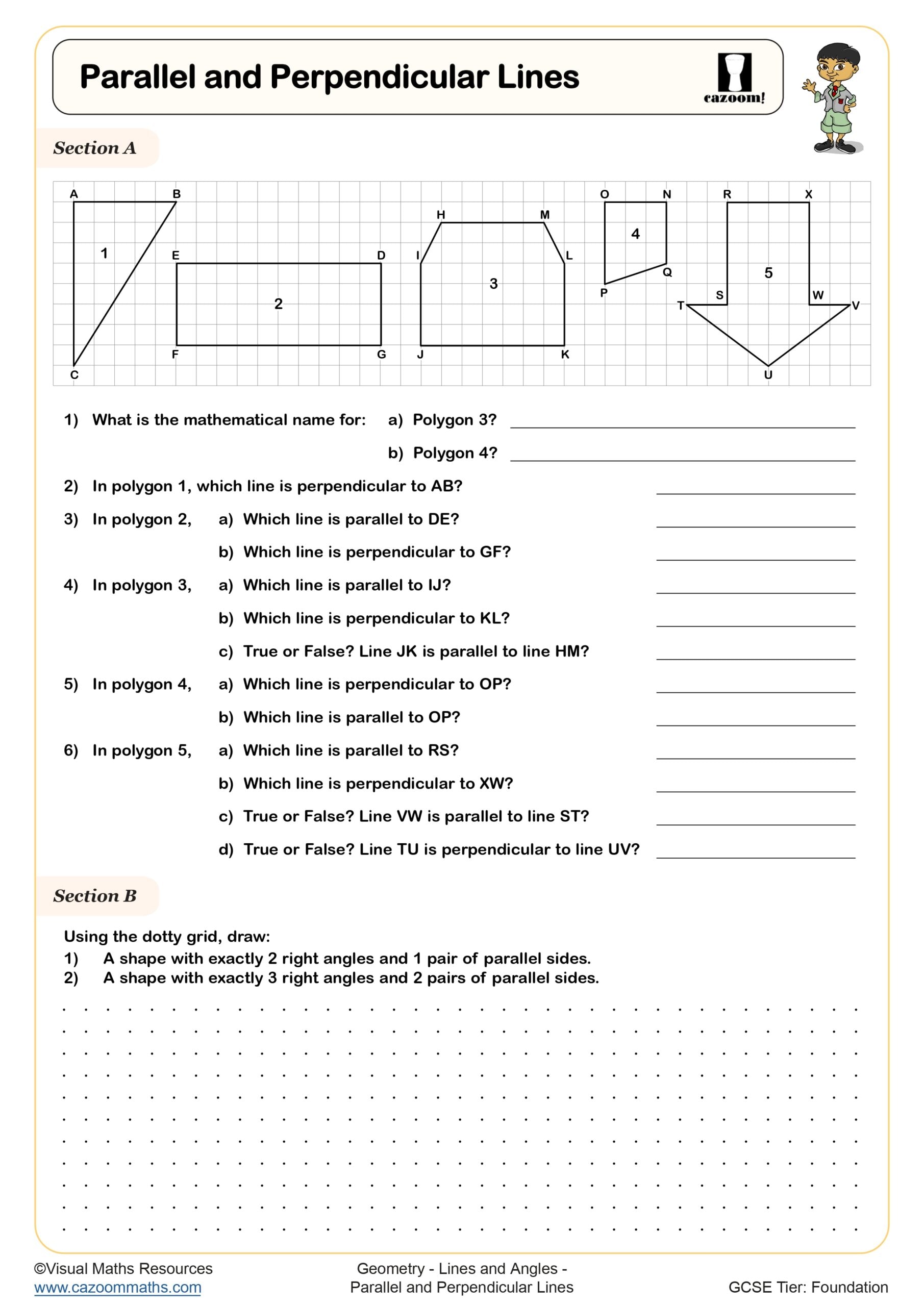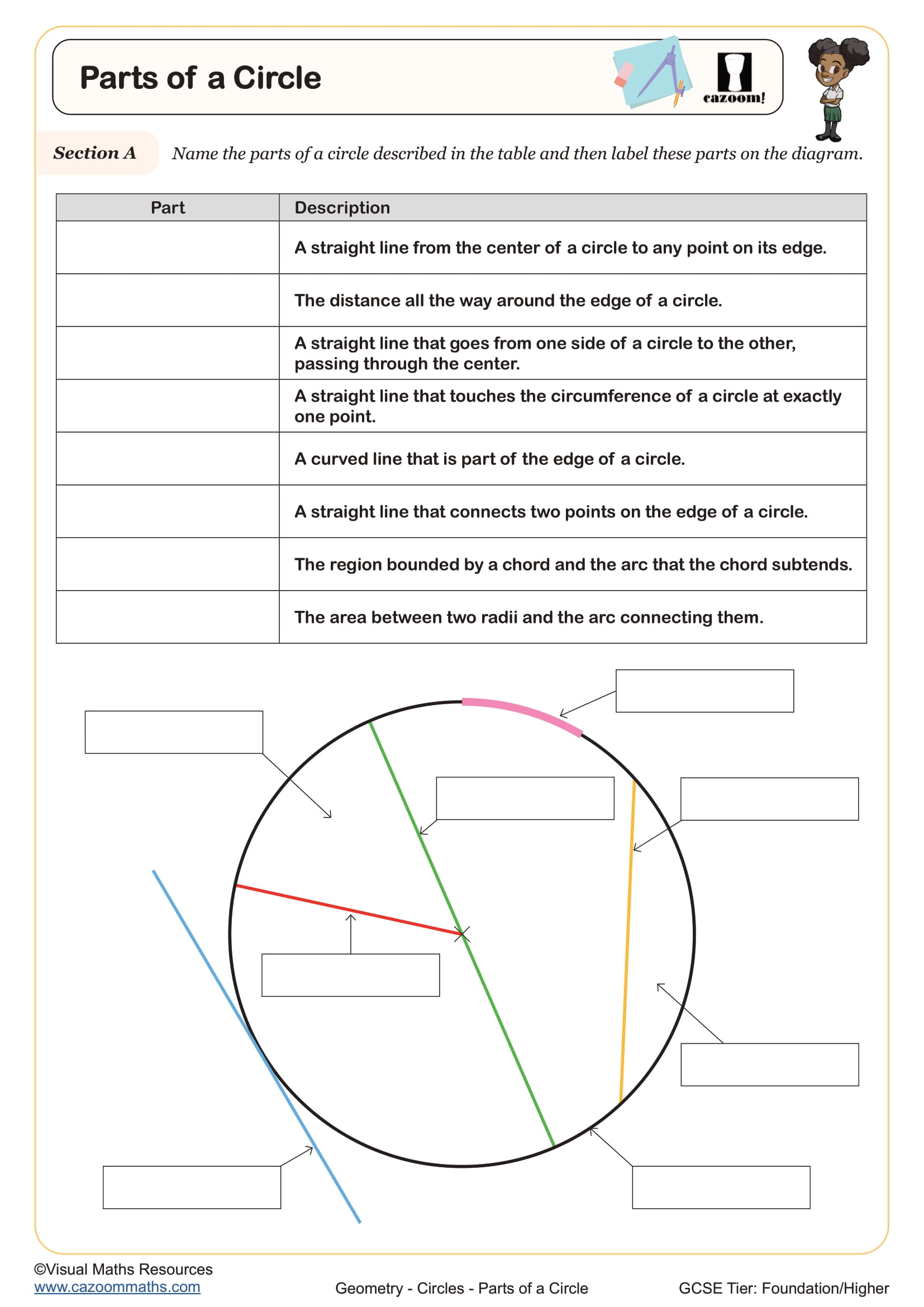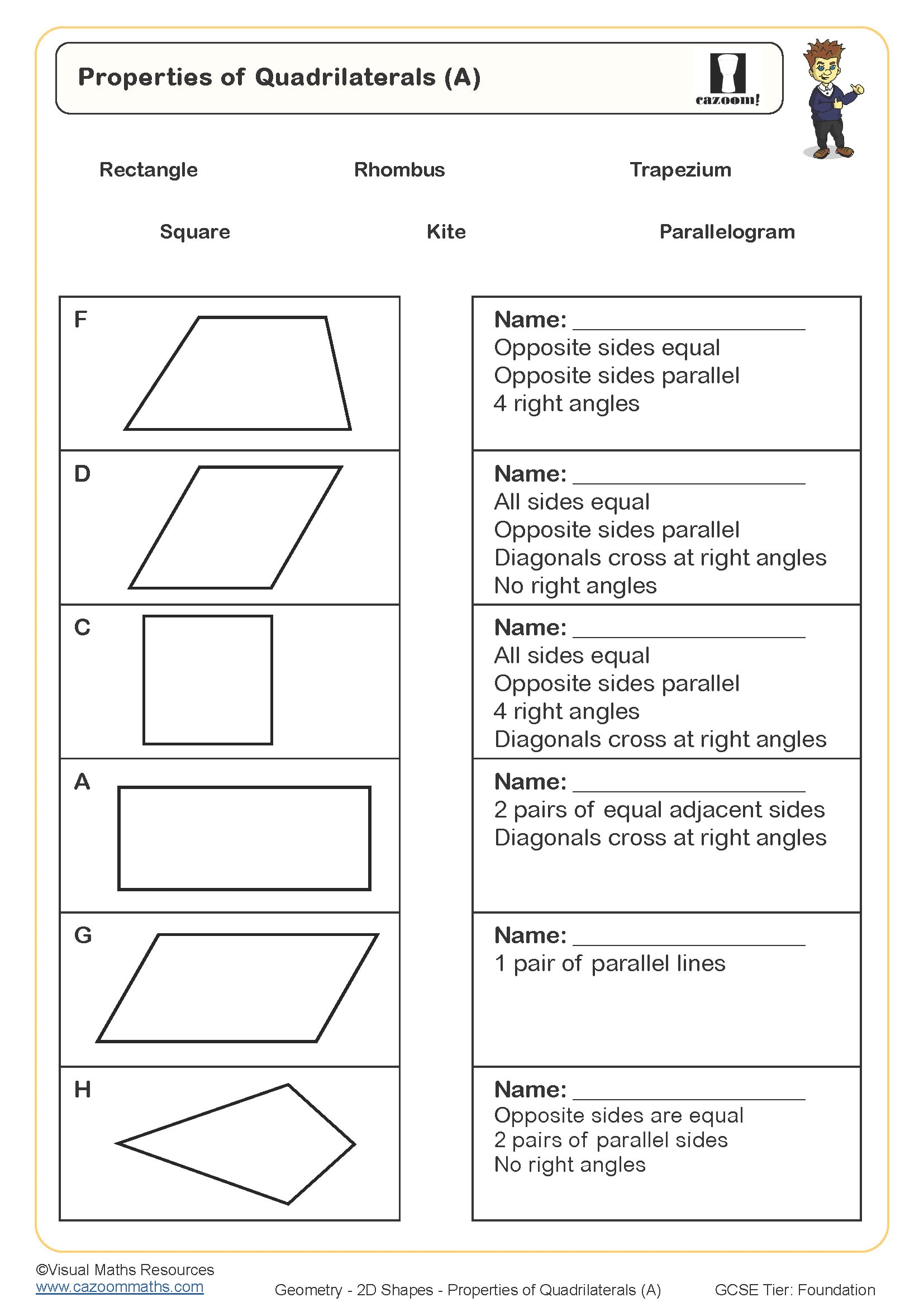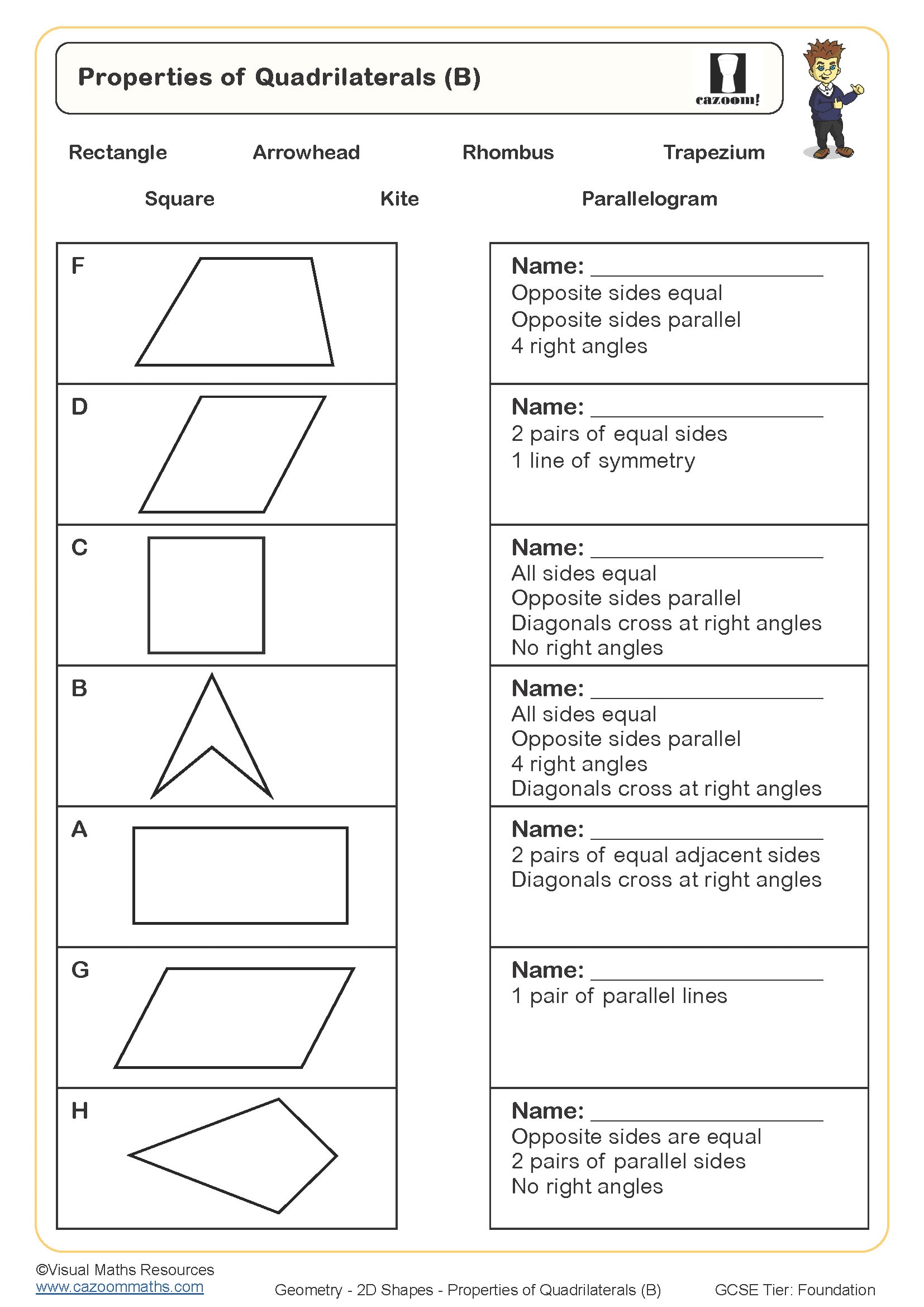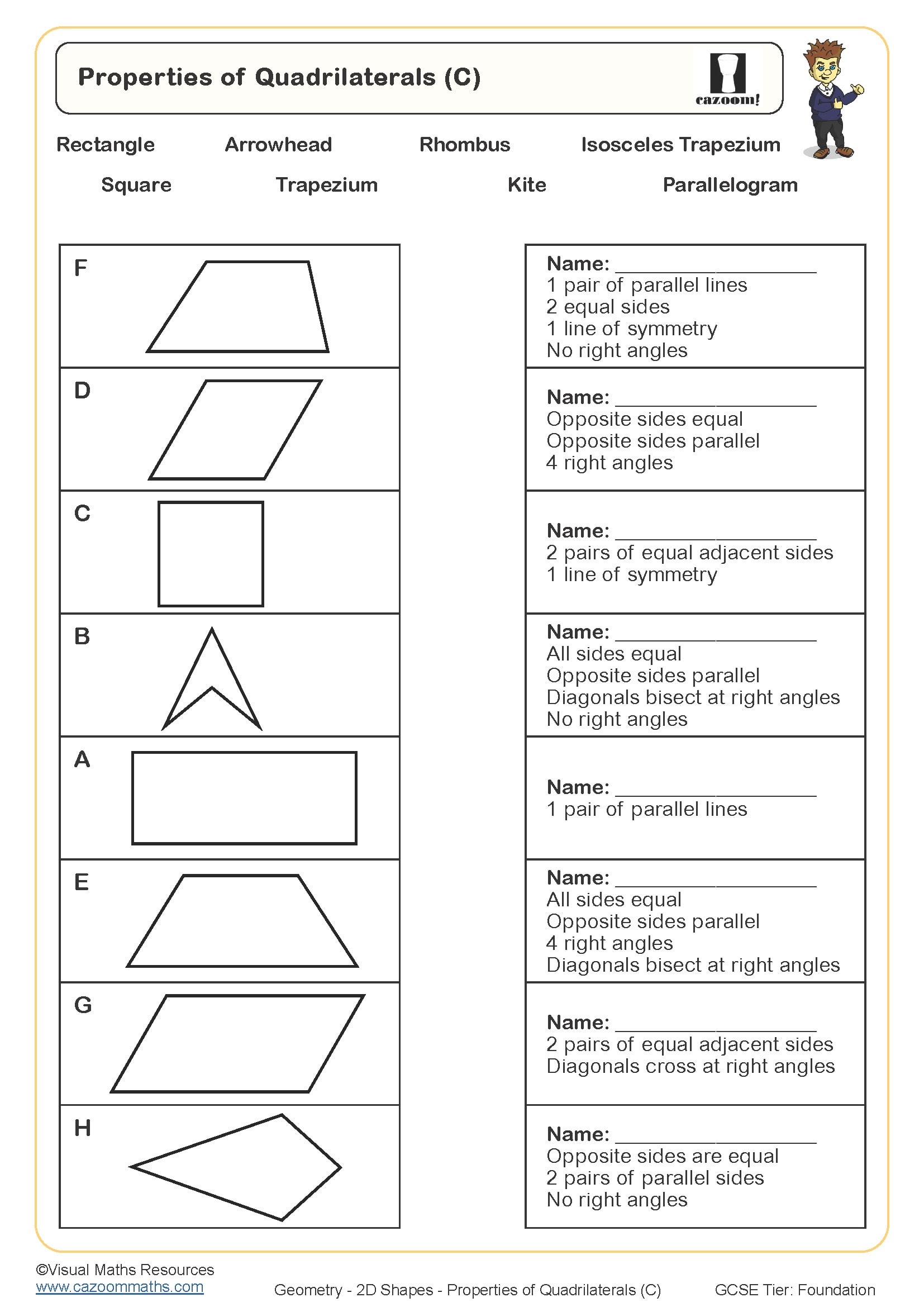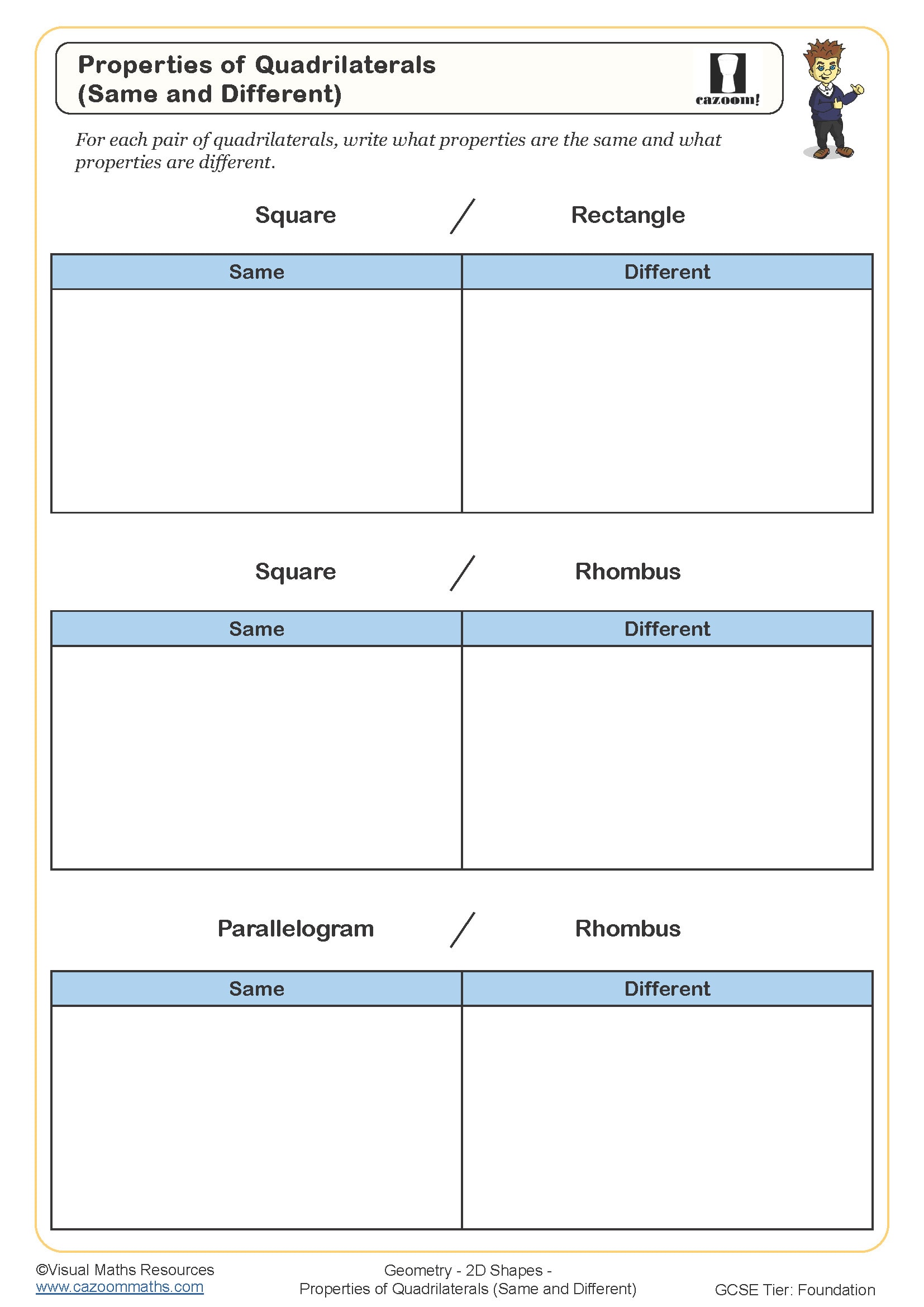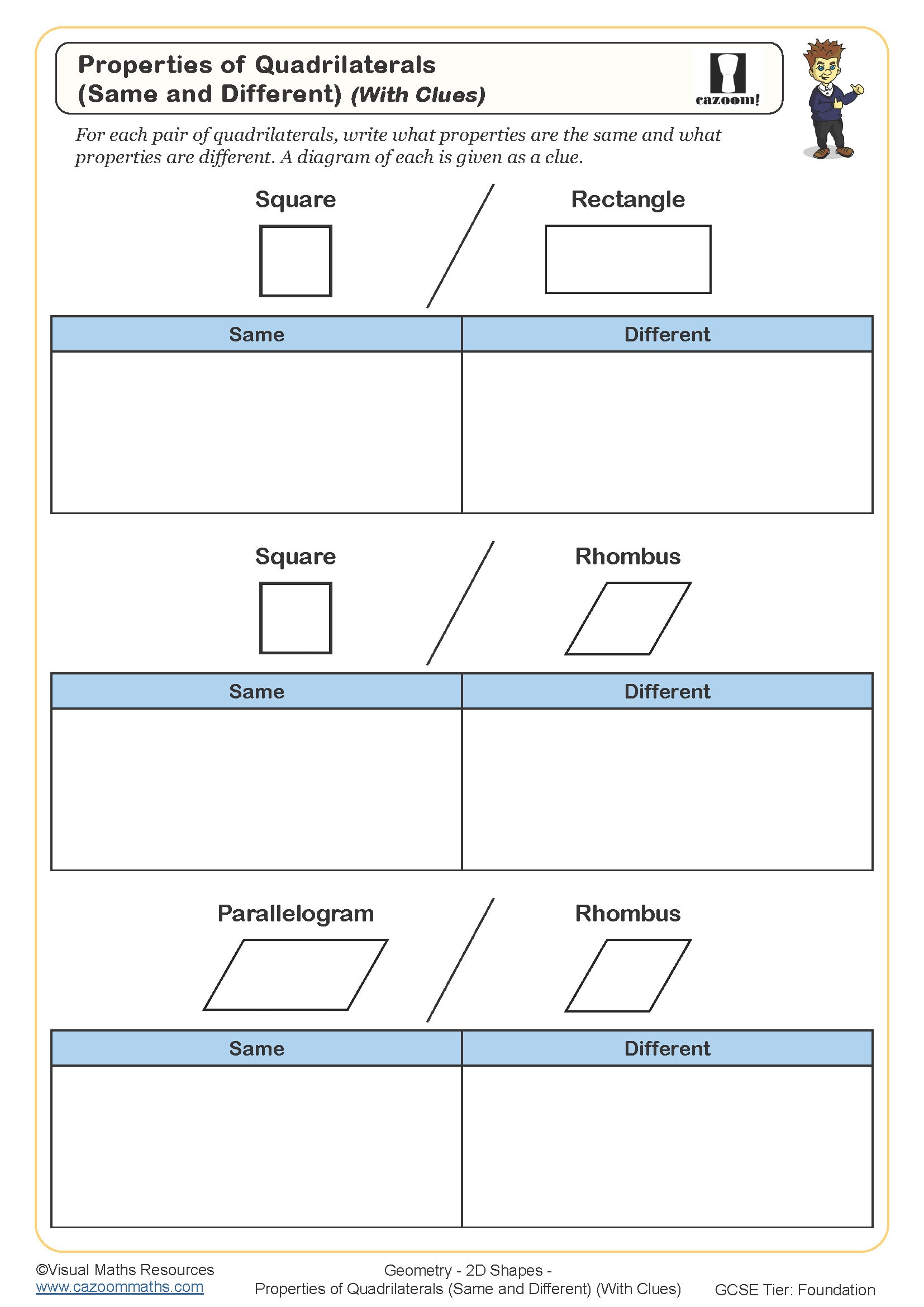Year 8 2D Shapes Worksheets
Want Stronger Maths Confidence? Focus on Year 8 Geometry Skills
The study of 2D shapes in Year 8 requires students to move beyond visual identification toward algebraic understanding of geometric characteristics. Students who master angle relationships will perform better in coordinate geometry and trigonometry when they reach advanced levels of study. Students who practice structured worksheets develop their ability to link spatial understanding with numerical calculations, especially when solving multi-step problems that involve unknown angles. The systematic method stops incorrect ideas from developing while it helps students develop precise geometric explanations.
Specific learning benefits include:
• Mastering angle properties in polygons
• Developing spatial reasoning abilities
• Connecting algebra to geometry concepts
• Strengthening mathematical communication skills
• Creating links between shapes and equations
• Building logical deduction techniques
• Understanding proof structures
Attention Maths Teachers: Cover These 2D Shape Topics for Better Results
These worksheets scaffold learning from concrete shape properties through to abstract geometric relationships, with detailed answer keys showing multiple solution methods. Students begin with familiar concepts before progressing to challenging applications that require combining several geometric principles. The materials balance computational skills with conceptual understanding, helping learners recognise when to apply specific angle rules or shape properties.
The core skills covered include:
• Interior angles in polygons – calculating sums and individual angles
• Exterior angles – understanding the 360° rule for all polygons
• Angle properties of triangles – applying sum rules and special cases
• Quadrilateral properties – distinguishing parallelograms, trapeziums, kites
• Circle geometry basics – radius, diameter, circumference relationships
• Symmetry and tessellation – rotational and reflective properties
• Area of compound shapes – breaking complex figures into simpler parts
• Bearings and scale drawings – practical geometry applications
• Constructions with ruler and compass – perpendicular bisectors, angle bisection
Discover Why Schools Prefer These Year 8 Shape Worksheets Over Apps
These worksheets were made specifically for mixed-ability classrooms to help maths teachers meet the needs of all their young pupils. The different questions let students who require additional instruction get help at the same time as students who are ready for harder problems. Answer sheets save teachers time when grading and show them common mistakes that they can fix in later lessons. Each of the Cazoom Maths resources has a clear learning goal and doesn't make things too hard for the students. The clear progression through topics is like most schemes of work, which makes it easy to add to existing plans. Consistent formatting and clear visuals make it easier for the brain to work, so students can focus on the maths instead of figuring out how to read the instructions. In thousands of UK classrooms, teachers trust Cazoom Maths resources.
Why 2D Shape Knowledge Goes Beyond the Classroom
Understanding 2D shapes forms the foundation for countless real-world skills and career paths.
• Architecture and design – creating floor plans and elevations
• Engineering drawings – interpreting technical diagrams and blueprints
• Computer graphics – understanding pixels, vectors, and screen geometry
• Navigation and maps – using bearings and scale for route planning
• Art and photography – composing images using geometric principles
• Sports field markings – calculating areas and perimeters for layouts
• DIY and construction – measuring angles for cutting materials accurately
• Fashion and textiles – creating patterns from geometric shapes
